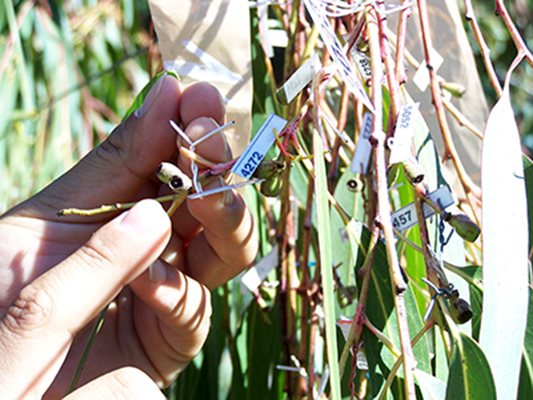Tree Improvement
Genetic improvement of forest trees, as with any other crop, can be done through selection and breeding. In nature, the forces of the environment naturally select the fittest trees in the population. In a tree improvement program, selection is done artificially, with the breeder choosing those trees that offer the most utility, and only using those genotypes to plant the next generation of trees. Camcore works with pines, eucalypts, teak and gmelina in its breeding and testing programs around the world. The goals in our breeding efforts are to improve adaptability, growth rate, disease resistance, wood quality and cold/drought tolerance.
Tree breeding programs can be thought of sequentially, first selecting the best species for a particular environment, then selecting the best provenances (geographic sources), then the best families, and then the best individual trees in the best families. The selected genotypes can then be crossed among themselves to produce the next generation, when the selection and breeding cycle can begin again.
Typically, within a species, there is variation in volume growth among provenances. The best provenances may grow 10% to 30% faster than the average of the species (and the worst 10% to 30% slower). Similarly, the best families within a provenance may grow 2) to 25% faster than the average of the provenance. Finally, the breeder can select outstanding individual trees within the best families to make additional genetic gain.

Techniques for selection and breeding can range from very simple to quite complex. For example, all of these methods can be useful approaches in tree breeding:
- Thinning a plantation to create a seed production area called a seed stand.
- Collecting and planting seeds from individual trees with desirable traits.
- Vegetatively propagating individuals with desirable traits.
- Directing pollination among individuals with desirable traits.
- Conducting large-scale, planned field trials for complex trait assessments and future selection.
- Crossing between species to create hybrid vigor.

